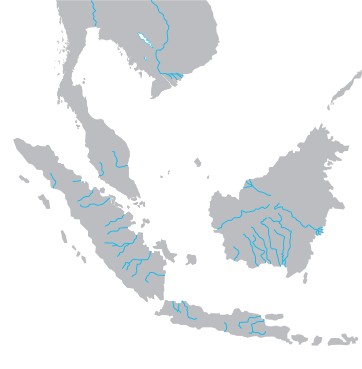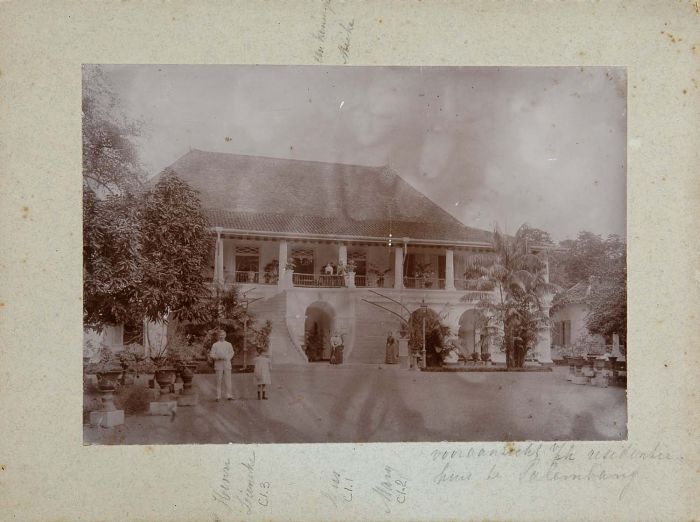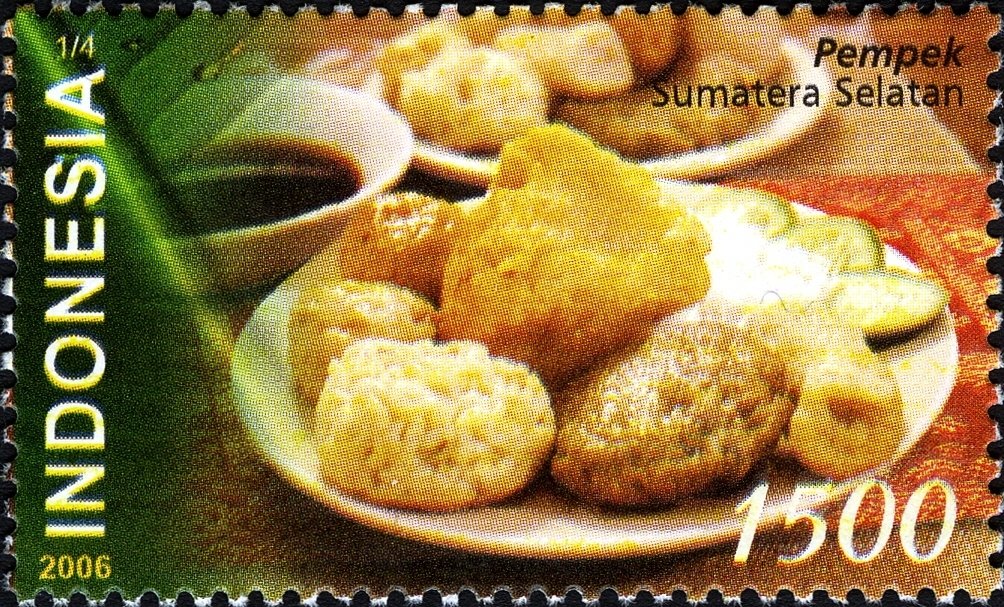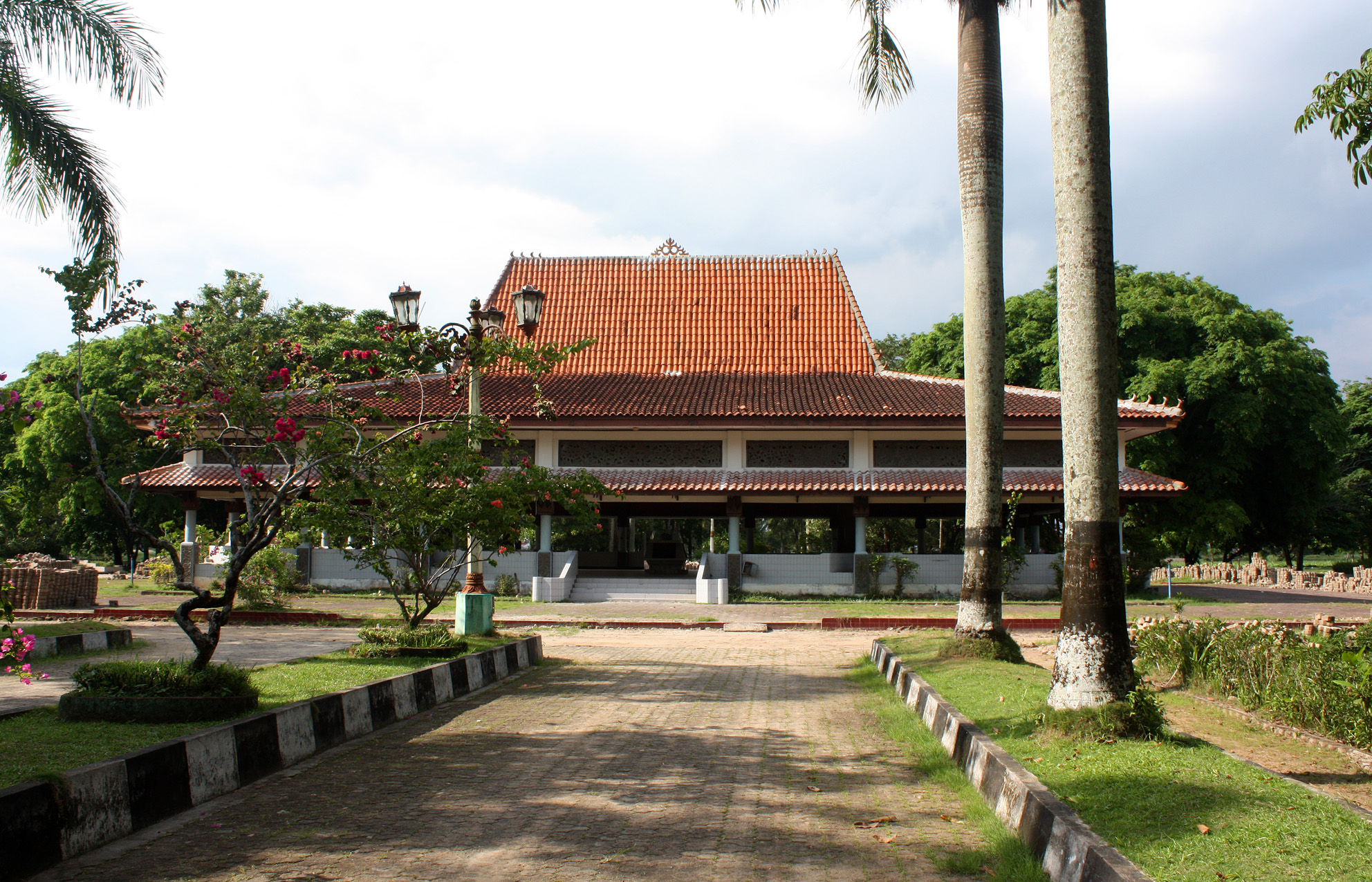|
Palembang
Palembang (, Palembang: ''Pelémbang'', Mandarin: 巨港 (Jùgǎng), Hokkien: 舊港 (Kū-káng), Jawi: ) is the capital city of the Indonesian province of South Sumatra. The city proper covers on both banks of the Musi River in the eastern lowlands of southern Sumatra. It had a population of 1,668,848 at the 2020 Census;Badan Pusat Statistik, Jakarta, 2021. the official estimate as at mid 2023 was 1,772,492 (comprising 887,101 males and 885,391 females).Badan Pusat Statistik, Jakarta, 28 February 2024, ''Kota Palembang Dalam Angka 2024'' (Katalog-BPS 1102001.1671) Palembang is the second most populous city in Sumatra, after Medan, and the twelfth most populous city in Indonesia. The Palembang metropolitan area has an estimated population of more than 2.7 million in 2023. It comprises the city and parts of regencies surrounding the city, including Banyuasin Regency (11 administrative districts), Ogan Ilir Regency (seven districts), and Ogan Komering Ilir Regency ( ... [...More Info...] [...Related Items...] OR: [Wikipedia] [Google] [Baidu] |
South Sumatra
South Sumatra () is a Provinces of Indonesia, province of Indonesia, located in the southeast of the island of Sumatra. The capital and largest city of the province is the city of Palembang. The province borders the provinces of Jambi to the north, Bengkulu to the west and Lampung to the south, as well a maritime border with the Bangka Belitung Islands to the east. It is the largest province in the island of Sumatra, and it is slightly smaller than Portugal, the department of Boquerón, Paraguay, Boquerón in Paraguay or the U.S. state of Maine. The Bangka Strait in the east separates South Sumatra and the island of Bangka Island, Bangka, which is part of the Bangka Belitung Islands province. The province has an area of and had a population of 8,467,432 at the 2020 census;Badan Pusat Statistik, Jakarta, 2021. the official estimate as at mid-2023 was 8,743,522 (comprising 4,453,902 males and 4,289,620 females).Badan Pusat Statistik, Jakarta, 28 February 2024, ''Provinsi Sumatera Sel ... [...More Info...] [...Related Items...] OR: [Wikipedia] [Google] [Baidu] |
Palembang Language
Palembang, also known as Palembang Malay (), is a Malayic languages, Malayic variety of the Musi languages, Musi dialect chain primarily spoken in the city of Palembang and nearby lowlands, and also as a lingua franca throughout South Sumatra. Since parts of the region used to be under direct Javanese people, Javanese rule for quite a long time, Palembang is significantly influenced by Javanese language, Javanese, down to its core vocabularies. While the name ''Palembang'' in the broad sense can also refer to the Musi dialect group as a whole, it is most commonly used as an endonym for the speech used in the city and its immediate rural vicinity. In 2008, all the ISO 639-3 codes for Musi dialects, including [plm] for Palembang, were retired and merged into [mui] Musi. The old codes ([plm], [lmt], [pen], [rws]) are no longer in active use, but still have the meaning assigned to them when they were established in the Standard. Classification Based on lexicostatistical analyses, ... [...More Info...] [...Related Items...] OR: [Wikipedia] [Google] [Baidu] |
LRT Palembang
The South Sumatra Light Rapid Transit (, lit. "South Sumatra Integrated Rail Line", shortened to LRT Sumatera Selatan or LRT Sumsel), colloquially known as LRT Palembang or Palembang LRT, is an operational light rapid transit system in Palembang, South Sumatra, Indonesia which connects Sultan Mahmud Badaruddin II International Airport and Jakabaring Sport City. It is the first practical modern light rapid system to operate in Indonesia. It was also the first rail line as a rapid transit system in the country. The system is owned by Directorate General of Railways, Ministry of Transportation of the Republic of Indonesia, Government of South Sumatra, and Government of Palembang; PT Kereta Api Indonesia was appointed to operate the system. Starting construction in 2015, the project was built to facilitate the 2018 Asian Games and was completed in mid-2018, just a few months before the event. Costing Rp 10.9 trillion for construction, the system utilizes trains made by local manuf ... [...More Info...] [...Related Items...] OR: [Wikipedia] [Google] [Baidu] |
Sultan Mahmud Badaruddin II Museum
Sultan Mahmud Badaruddin II Museum is a municipal museum in Palembang, Indonesia. The museum is established inside a 19th-century building former of the office of the colonial resident of South Sumatra. The building also houses the tourist department of Palembang. History The location of the present museum was originally the location of the Kuta Lama, the Palembang Sultanate, old palace of Sultan Mahmud Badaruddin I (1724–1758), sovereign of the Palembang Sultanate. Following the abolition of the Palembang Sultanate, the palace of Kuta Lama was demolished by the British colonial government on October 7, 1823. The abolition of the Sultanate was a form of punishment made by the British colonial government toward the Palembang Sultanate for the massacre that occurred in the Dutch lodge ''Sungai Alur'', although this may have been a political movement to remove the sovereignty of the Sultanate from the city. Immediately after the demolition of the Kuta Lama, in 1823, a new buildin ... [...More Info...] [...Related Items...] OR: [Wikipedia] [Google] [Baidu] |
Palembang City Regional House Of Representatives
The Palembang City Regional House of Representatives ( abbreviated to DPRD Palembang) is the unicameral municipal legislature of the city of Palembang, South Sumatra, Indonesia. It has 50 members, who are elected every five years, simultaneously with the national legislative election. History While under Dutch control since 1821, Palembang did not have a colonial municipal government until 1906, with the city being run by the Palembang Residency. The city council (''Gemeenteraad'') was created in 1906, and it initially had 13 members – eight Europeans, 3 Native Indonesians, and 2 representatives of other Asian communities. These initial 13 members would serve until 1919, when Palembang's mayor was appointed and he took leadership of the city council. After 1919, five-year terms were introduced. Membership of the council was gradually increased, with 15 members in 1919 and 19 in 1923. Early in the Indonesian National Revolution, Republican authorities in Palembang formed a regio ... [...More Info...] [...Related Items...] OR: [Wikipedia] [Google] [Baidu] |
Great Mosque Of Palembang
The Great Mosque of Palembang (Indonesian ''Masjid Agung Palembang''), also known as Sultan Mahmud Badaruddin I Great Mosque after the former Sultanate of Palembang, Sultan of Palembang, is the main mosque of Palembang, the capital of South Sumatra. The mosque is the largest in South Sumatra, and the third largest mosque in Sumatra after the Grand Mosque of West Sumatra and An-Nur Great Mosque Pekanbaru, Great Mosque of Pekanbaru. History The original mosque of Palembang was a royal mosque located within the ''Kraton (Indonesia), kraton'' (palace) complex of Kuto Gawang and was built by Sultan Ki Gede Ing Suro. After the destruction of this mosque in 1659 by Admiral Johan van der Laen of the Dutch East India Company, VOC, the Sultanate of Palembang, under the reign of Sultan Mahmud Badaruddin I Jaya Wikrama, decided to build a new mosque. Construction started on Hijri year, Hijri 1 Jumada al-Thani, Jumadil Akhir 1151 (1738 CE) beside the Kraton Tengkuruk, also known as ... [...More Info...] [...Related Items...] OR: [Wikipedia] [Google] [Baidu] |
Pempek
''Pempek'', ''mpek-mpek'' and also known as colloquially as ''empek-empek'' is a savoury Indonesian cuisine, Indonesian fishcake delicacy, made of Fish as food, fish and tapioca, from Palembang, South Sumatera, Indonesia. Pempek is served with a rich sweet and sour sauce called ''kuah cuka'' or ''kuah cuko'' (), or just "cuko". Sometimes local people also eat the dish with yellow noodles and diced cucumber to balance out the vinegar's sourness, or adding chili powder to giving the vinegar's spiciness. Origin ''Pempek'' is the best-known of Palembangese cuisine, Palembang's dishes. Its origin is undoubtedly Palembang. However, the history behind the creation of this savoury dish is unclear. Traditional folklore connects it with Chinese influences. Some suggests that pempek probably originated from ancient ''kelesan'', a steamed dish made of the mixture of sago dough with fish flesh, dated as early as Srivijayan era circa 7th century CE. Sago flour might be extracted from the trun ... [...More Info...] [...Related Items...] OR: [Wikipedia] [Google] [Baidu] |
Palembang People
Palembang people (; Palembang language: ''Uwong Pelémbang''), also called Palembang Malay (; Jawi: ) are an ethnic group native to the city of Palembang and its surrounding areas in the South Sumatra province of Indonesia. Palembang is one of the oldest cities in Southeast Asia, with a history dating back to the 7th century when it was the capital of the ancient Srivijaya Empire, a powerful Hindu-Buddhist maritime kingdom and empire that controlled much of the trade in the region. The 2010 census recorded 1,252,258 Palembang living in Indonesia.''Indonesia's Population: Ethnicity and Religion in a Changing Political Landscape. Institute of Southeast Asian Studies. 2003. .'' They speak Palembang language, which is a Malay dialect with influences from Javanese and Arabic. The language has its own unique vocabulary and pronunciation, distinguishing it from other Malay dialects. The majority of Palembang people are Muslims, with a small percentage of the population following Bu ... [...More Info...] [...Related Items...] OR: [Wikipedia] [Google] [Baidu] |
Cheng Ho Mosque
Zheng He Mosque, officially the Islamic Mosque of Mohammed Zheng He in Srivijayan Palembang ( Indonesian: Masjid Al-Islamiyyah Muhammad Cheng Ho Sriwijaya Palembang), is a mosque dedicated to Muslim Chinese people located in Jakabaring Palembang, South Sumatra, Indonesia. The name of the mosque is in honor of the acclaimed Muslim Chinese admiral, Zheng He. The mosque was founded by the initiative of the elders, advisers, and administrators of the Chinese Islamic Association of Indonesia (PITI) of South Sumatra, as well as Chinese community leaders around Palembang. Previously the mosque was led by renowned imam, Ustadz Choirul Rizal, who had memorized 30 juz' from the Quran. Ustadz Miftah who serves as an imam today, is also a hafiz.Tempat Ibadah di Palembang Masjid Muhammad Cheng Ho. Palemabangbox. Retrieved July 17, 2017. The mosque was built with a combination of architectural elements from China, Malay, and Indonesian archipelago, complete with certain parts of the mosq ... [...More Info...] [...Related Items...] OR: [Wikipedia] [Google] [Baidu] |
Sriwijaya Kingdom Archaeological Park
Srivijaya archaeological park (), formerly known as Karanganyar archaeological site, is the ancient remnants of a garden and habitation area near the northern bank of Musi river within Palembang vicinity, South Sumatra, Indonesia. Remnants of ancient man-made canals, moats, ponds and artificial islands discovered in this area suggests the site was related with a 9th-century settlement related to the Srivijaya empire. Several artifacts, such as Buddhist statues, beads, pottery and Chinese ceramics were found in this area, confirming the area was once a dense human habitation. Archaeological site The archaeological park is located in Jalan Syakhyakirti, Kelurahan Karanganyar, Kecamatan Gandus, Palembang, on an alluvial plain of the Musi River near its junction with the Ogan and Kramasan rivers. Before the archeological excavation of the site in the late 1980s, the site of Karanganyar was thought to be a potential site for a Srivijayan political power center. However, immediate ... [...More Info...] [...Related Items...] OR: [Wikipedia] [Google] [Baidu] |
Sumatra
Sumatra () is one of the Sunda Islands of western Indonesia. It is the largest island that is fully within Indonesian territory, as well as the list of islands by area, sixth-largest island in the world at 482,286.55 km2 (182,812 mi.2), including adjacent islands such as the Simeulue Island, Simeulue, Nias Island, Nias, Mentawai Islands, Mentawai, Enggano Island, Enggano, Riau Islands, Bangka Belitung and Krakatoa archipelago. Sumatra is an elongated landmass spanning a diagonal northwest–southeast axis. The Indian Ocean borders the northwest, west, and southwest coasts of Sumatra, with the island chain of Simeulue, Nias, Mentawai Islands, Mentawai, and Enggano off the western coast. In the northeast, the narrow Strait of Malacca separates the island from the Malay Peninsula, which is an extension of the Eurasian continent. In the southeast, the narrow Sunda Strait, containing the Krakatoa archipelago, separates Sumatra from Java. The northern tip of Sumatra is near ... [...More Info...] [...Related Items...] OR: [Wikipedia] [Google] [Baidu] |
Komering People
The Komering (; Komering: ''Jolma Kumoring'') are an ethnic group that inhabits along the Komering River in South Sumatra province. The Komering tribe is a Lampungic ethnic group originating from Kepaksian Sekala Brak in Lampung. There are around 530,000 Komering people throughout Indonesia, they are often found along the Komering River which crosses several areas such as; East Ogan Komering Ulu, Ogan Komering Ilir, and South Ogan Komering Ulu regencies in South Sumatra province. Etymology In general, the name Komering is taken from one of the tributaries of the Musi River, namely the Komering River, which indicates that this area is Komering's territory. As also written by Zawawi Kamil (Menggali Babad & Sedjarah Lampung) it is mentioned in the Komering Minanga dialect poem; *English Translation; Culture Housing and architecture Most Komering people have houses called stilt houses, these houses are suitable for the geographical conditions where the Komering people are lo ... [...More Info...] [...Related Items...] OR: [Wikipedia] [Google] [Baidu] |




